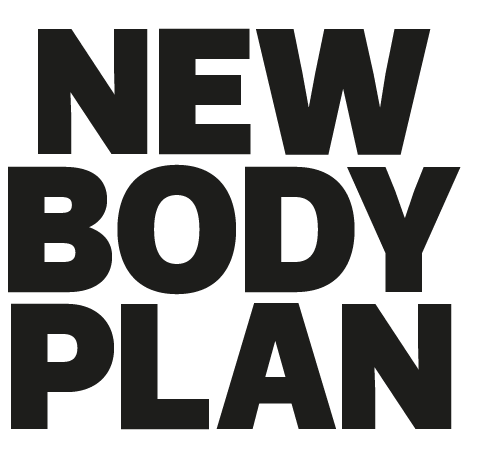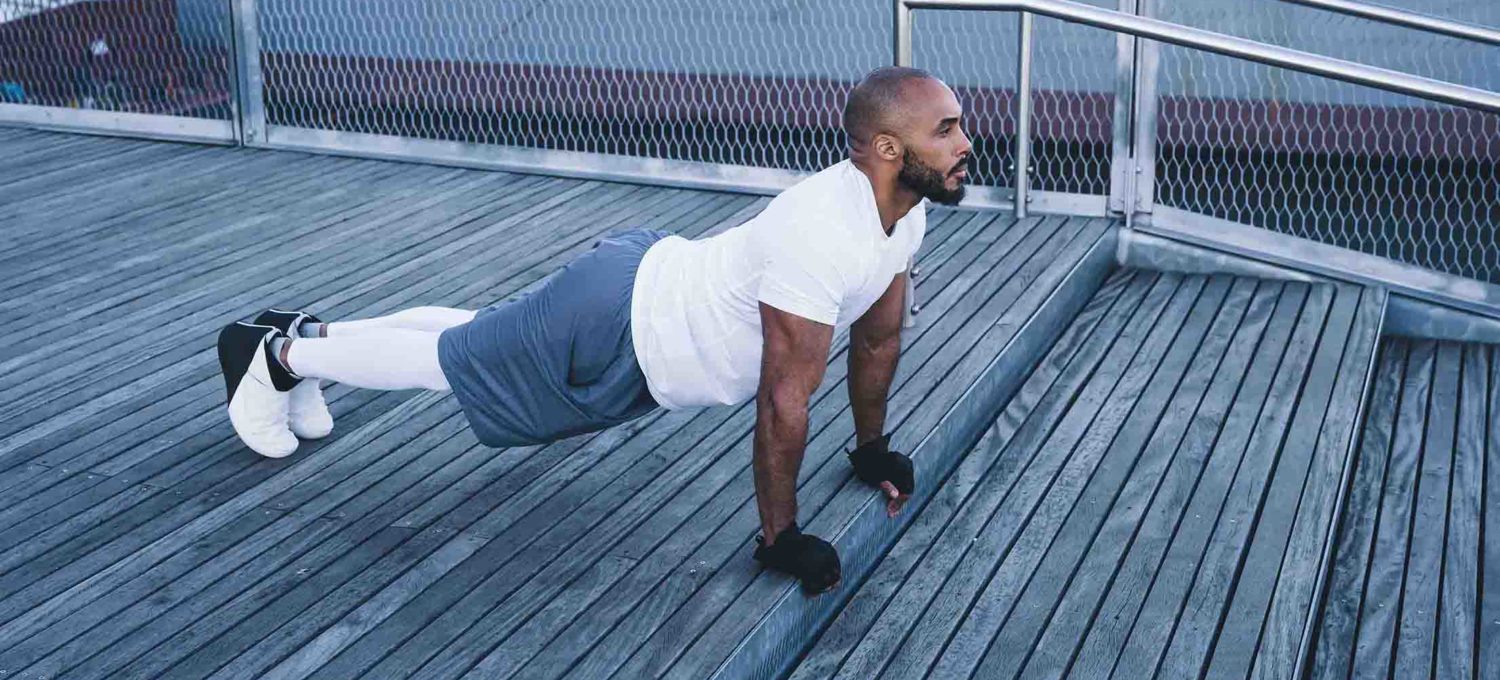How many push ups a day should I do to get a bigger chest?
Find out how to master this classic bodyweight move then discover how many push ups a day you should to do if you want to build a bigger chest!
There’s a reason the Royal Marines Commandos include press-ups in their fitness test. It’s because the classic bodyweight exercise is a great strength challenge. Mastering your bodyweight will also stand you in great stead for when you come to add load in the form of dumbbells and barbells. So how often should you train the move? And how many reps should you be able to do? Read on to get our expert guide to using press-ups to build a bigger, strong chest.
What’s the point of push-ups?
Push-ups are great for a number of reasons. Firstly, you don’t need any equipment, which means they’re both accessible and beginner friendly. They develop your chest, triceps (the muscles on the back of your upper arms), your front shoulders and your core, so you get a good muscle-building bang for your buck. You can also regress or progress the difficulty by doing different variations, so it’s an exercise that will last you a training lifetime.
Find your perfect fat-loss plan!
Take the New Body quiz!
Are push-ups just for beginners?
This is a common misconception about bodyweight exercises. A lot of people think they are too easy. Well, if that’s your view, try doing sets of double clap press-ups and let us know if you still hold that view. The reality is that the better you are at bodyweight moves, the better equipped you’ll be when you try to lift an external load such as a barbell. There are so many press-up variations and progressions that there will be useful options whatever your training experience.
How often should I do push-ups?
Unless you’re doing a specific press-up challenge, such as the 100 Push-Up Challenge, it doesn’t make sense to do push-ups every day. Some people like to do them as part of a quick morning fitness routine but that’s not optimal from a muscle building point of view. Your muscles get bigger and stronger during the recovery process following a workout. If you interrupt that process, by training a muscle group every day, you’re likely to undermine that benefit. Doing press-ups two or three times a week is probably the sweet spot.
How many push-ups should I be able to do?
All any of us should really care about is making progress from where we are right now. It doesn’t really mater whether you can do 1 or 100 press-ups in one go. What matters is how you apply yourself to a plan designed to make you leaner, fitter and stronger than you are today. That said, it’s always nice to have a target to work towards. Your aim should be to perform at least 10 full bodyweight press-ups in one go. Once you can do that, your next target should be to get to 20. When you get there you can think about adding load by placing a weight plate on your back.
What should I do if I can’t do a single push-up?
If you can’t do a single push-up, that’s no big deal. All you need to do is create a mini-plan that will allow you to perform a rep and then progress from there. A common regression for people who can’t do press-ups is to do the exercise on your knees. That’s not particularly effective because it changes the mechanics of the move and also makes it really easy to cheat reps and make them ineffective. A better approach is to combine incline press-ups, where your hands are on an elevated surface (maybe 30-40cm high) with eccentric press-ups where you only perform the lowering part of the move. If you do the latter, make your reps as slow as possible.
The perfect push-up form guide
Here’s how to perform the classic bodyweight exercise with perfect technique
Place your hands in line with your shoulders
A common mistake is placing your hands in line with your face. Doing that will make it much harder to use a proper range of motion, which means you won’t maximise the opportunity from each rep. Instead, place your hands in line with your shoulders and the top of your chest. It will help you recruit and grow your pecs much more effectively.
Place your hands just wider than shoulder-width apart
The width of your hands determines the muscular emphasis of the move. The closer together they are the more you emphasise your triceps. The wider apart they are the more you emphasise your chest muscles. The classic press-up should be performed with hands slightly wider than shoulder width apart.
Keep your body in a straight line
Your body should be in a straight line for head to heels. You can’t easily see yourself as you perform reps so it is worth filming yourself to check your body position. If you drop your hips (which people tend to do when they get tired) you’ll stress your lower back. If you raise your hips you’ll take tension off your abs and core.
Don’t let your elbows flare out to the sides
This is so common. If your elbows flare out to the sides it will put extra stress on your elbow joint. So stay disciplined and do them army style, with your elbows tucked in to the sides of your body.
Use a full range of motion
Reducing your range of motion so you can do more reps might make you feel good but you are shortchanging your muscles. Use a full range of motion by going nose to floor on the way down and straighten your arms at the top.
Lower slowly and press up powerfully
Don’t just drop to the floor. Control the negative (lowering) phase of the rep by lowering for a count of three or four, if adding muscle is your main aim. Equally, press back up powerfully to recruit as many muscles fibres as possible.
The chest and tricep workout for a broader chest and bigger arms
The best press-up variations
Once you’ve mastered the basic press-up, try these key variations to expand your muscle-building toolkit
Best for beginners: Incline push-up
How: Use the same form as a standard press-up but perform the exercise with your hands on a raised surface.
Why: Having your hands on a raised surface changes the angle of the body, reduces the weight you have to lift and makes the move easier.
Best for experienced lifters: Decline push-up
How: Same as the conventional press-up but do the move with your feet on a raised surface.
Why: Having your feet on a raised surface changes the angle of the body, increases the weight you have to lift and makes the move harder.
Best for bigger triceps: Diamond push-up
How: Perform the press-up with your hands close together so that your index fingers and thumbs form a ‘diamond’ shape. Take extra care to avoid your elbows flaring out to the sides.
Why: Placing your hands close together emphasises the triceps muscles so do this if you’re trying to build bigger arms.
Best for range of motion: Medicine ball push-up
How: Do a rep with one hand on a medicine ball then roll the ball across your body and repeat the exercise with your other hand on the ball. Alternate sides each rep.
Why: Having your hand raised on the ball will allow you to get a great range of motion on that side. The offset and unstable nature of the exercise also means it is excellent for developing core strength and stability.
Best for shoulder stability: Dive bomber or Hindu push-up
How: Get into a press-up position before raising your hips so that your head is in line with your upper arms. Move down and forwards by bending your elbows then push your chest up and away from the floor. Move back the way you came and repeat the exercise.
Why: Moving fluidly through the large range of motion is great for developing shoulder joint strength and stability.
Best for abs development: Spiderman push-ups
How: Perform a press up but, as you lower, bring one knee up to your elbow. As you press back up, return your leg to the starting position and repeat the movement on the other side the following rep. Alternate sides each rep.
Why: Going on to one leg and bringing the other leg up to your elbow will give an extra test to your abdominal muscles.
How to add press-ups into your workout
Here’s how to weave press-ups into your plan for maximum effect
You can add press-ups to any workout where you’re training your chest or upper body. You can also include them in circuit workouts because the lack of kit means they’re quick to set up and perform. If you’re doing a chest workout it makes sense to do them as one of your final chest moves because they are relatively safe to perform. You don’t want to do a heavy bench press when you’re tired, for example, but you can do a press-up when you’re fatigued without a big risk of injury.
Here’s an example o how you can add press-ups to a chest session:
- A: Decline press-up
- B: Press-up
- C: Incline press-up
How: Do 5 reps of each move in order without resting. Then rest for 60 seconds and complete the mini circuit two more times.
Why: The three exercises get easier as you get more tired and it also hits your chest and arms muscles in three different ways so you get a more rounded training stimulus.
Progressions: When three rounds becomes fairly comfortable, you can add a rep to each exercise or add a set.
Find your perfect fat-loss plan!
Take the New Body quiz!

